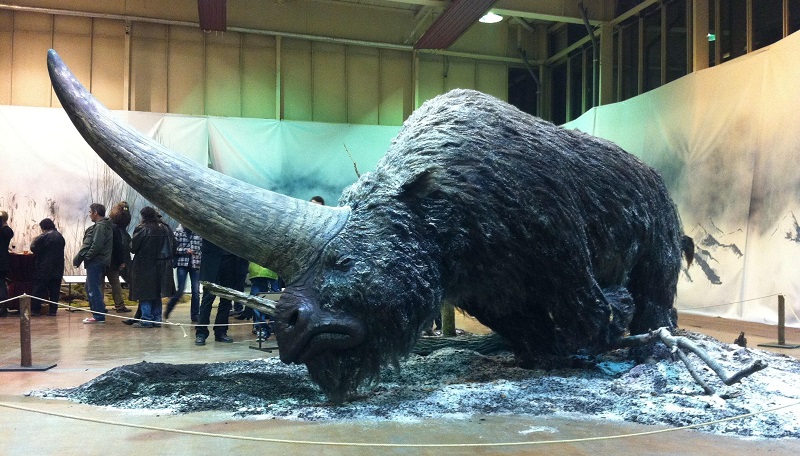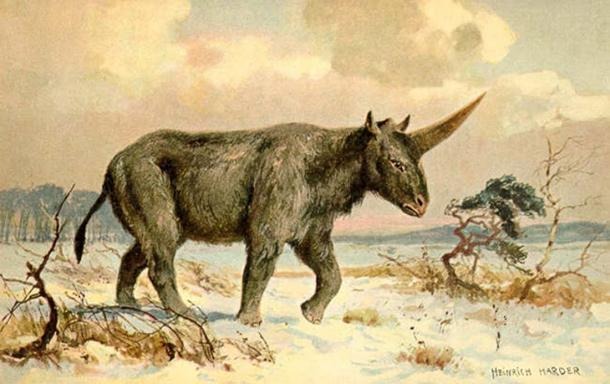Do you think this legendary creature exists? ❤️ 😍 💖

Elasmotherium is a rhinoceros ex.tinct species also known as the Giant Rhinoceros and the Giant Siberian Unicorn. The best-known species here, E. Sibiricum, was covered in hair and the size of a mammoth. is said to have a large horn protruding from its forehead, hence the name “Siberian Unicorn.”
This monster is about 2 meters tall, 4.5 meters long, and weighs 4 tons, according to preliminary reports. They are thought to have lived in Eurasia during the Late Pliocene and Pleistocene epochs.
They were discovered 2.6 million years ago, but the newly discovered fossils were discovered about 29,000 years ago. Elasmotherium was named for the first time in 1808 by Johan Fischer von Waldheim, Director Permanent of the Natural History Museum at Moscow University.
A beautifully preserved skull was discovered in the Pavlodar region of Kazakhstan in March 2016. Based on the size and condition of the skull, it is thought to be a very old male, but the cause of the monster’s death is unknown.

The horn is a hotly debated topic, with many people debating whether or not there is a horn, how big it is, and what it is used for. Defense, attracting mates, warding off competitors, sweeping snow from grass, and digging for water and roots are all theories about the whistle’s function.
The frontal protrusion on the skull, which caught the attention of paleontologists in the 19th century and was immediately interpreted as the main body of the skull, was the main evidence that the horned Siberian unicorn existed. The evidence also points to the horn not being round. A fossil with a partially healed, non-circular puncture wo.und in the base, commonly interpreted as the result of horn figh.ting with another male, lends support to this theory.

While the males fought for territory, their range extended from the Don River to the east of modern Kazakhstan. Surviving evidence suggests that these ancient rhinos lived in the southeastern part of the Western Siberian Plain for a long time.
However, there is no clear explanation for why Siberian unicorns di.e. The researchers looked at specific environmental factors that could have led to the ex.tinction of this species, as this could lead to answers to the ex.tin.ctions that other species are facing today.
The legend of the unicorn, or one-horned beast, has existed in China since the Warring States period and in Eastern Europe for millennia, with the general description of a beast with a single horn and a large stature.

Vasily Radlov discovered a legend about a “giant black bull” killed by a spear among the Yakuts of Siberia in 1866. The mon.ster is said to have a single horn or is related to a large white or blue fleece bull with a large horn on its forehead.
A collection of ballads known as “Golubinaia mortga” or “The Book of the Dove” from medieval Russia, depicting a righteous unicorn fighting a lion, represents lies. The unicorn in these stories is said to be the mother and father of all animals, and it lives in a Holy mountain.
However, this creature appears in other religious texts as a symbolic rather than a real entity.

While myths may point to the existence of this creature, more research and fossils are needed to determine whether or not this beast existed.
Do you want to see what this mythical creature would look like if it were real?




